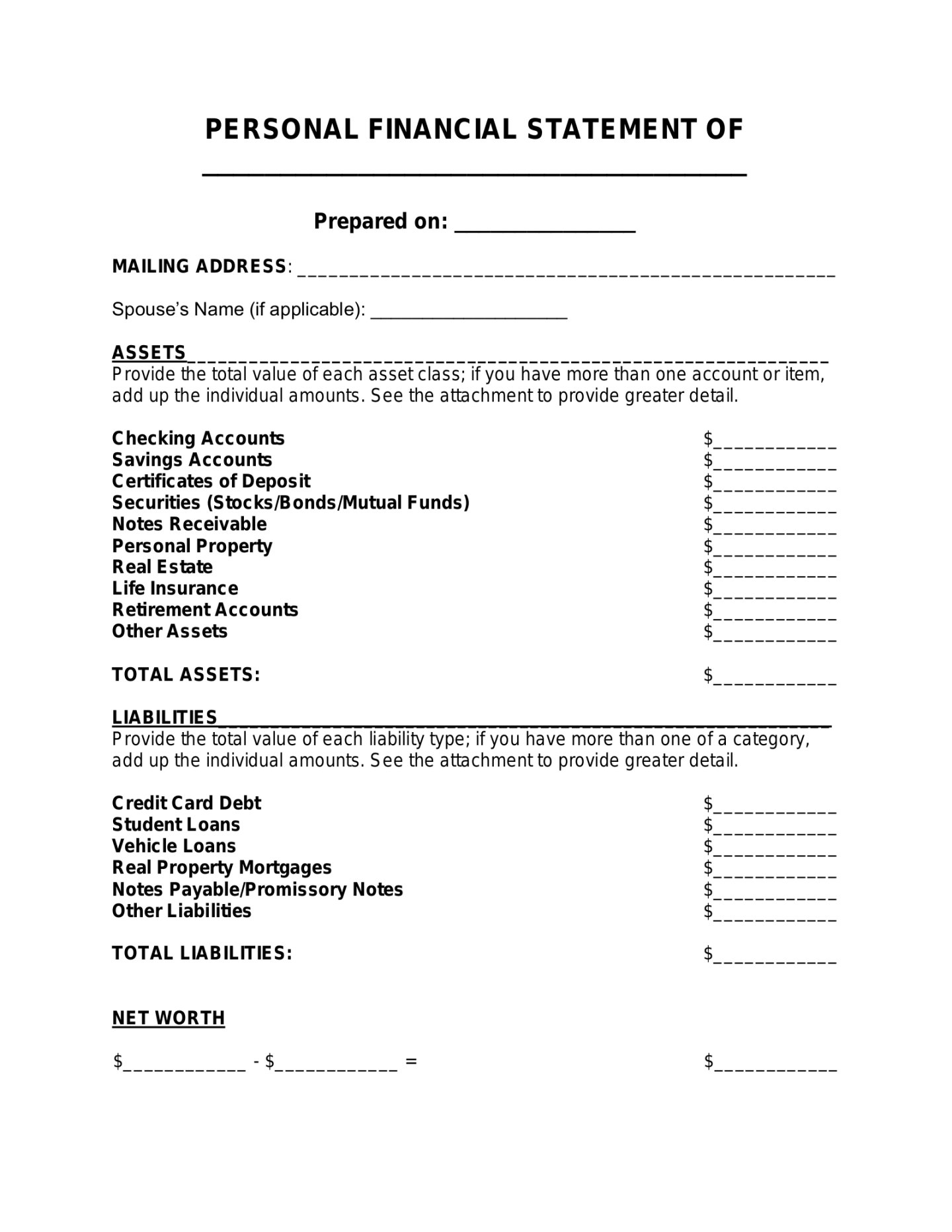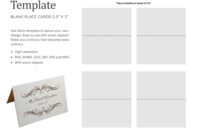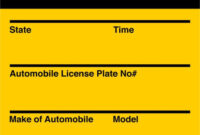Blank Personal Financial Statement Template is a foundational document for individuals seeking to manage their finances effectively. It provides a structured overview of one’s assets, liabilities, and net worth. When designed professionally, this template can enhance credibility and foster trust.
Design Elements for Professionalism and Trust

1. Clear and Consistent Layout:
Whitespace: Utilize ample whitespace to enhance readability and create a visually appealing layout.
2. Headings and Subheadings:
Hierarchy: Use a clear hierarchy of headings and subheadings to guide the reader through the template.
3. Tables and Lists:
Clarity: Use tables to organize financial data effectively and lists to present items sequentially.
4. Branding Elements:
Logo: Incorporate your personal or business logo prominently to establish brand identity.
5. Legal Disclaimer:
Placement: Include a legal disclaimer at the bottom of the template to protect your interests.
Essential Sections of a Blank Personal Financial Statement Template
1. Personal Information:
Name: Include your full name.
2. Assets:
Cash and Cash Equivalents: List savings accounts, checking accounts, and other liquid assets.
3. Liabilities:
Credit Card Debt: List outstanding balances on credit cards.
4. Net Worth:
Calculation: Subtract total liabilities from total assets to determine net worth.
Tips for Effective Use of a Blank Personal Financial Statement Template
Accuracy: Ensure that all information provided is accurate and up-to-date.
By following these guidelines and incorporating professional design elements, you can create a Blank Personal Financial Statement Template that effectively communicates your financial position and builds trust with stakeholders.


